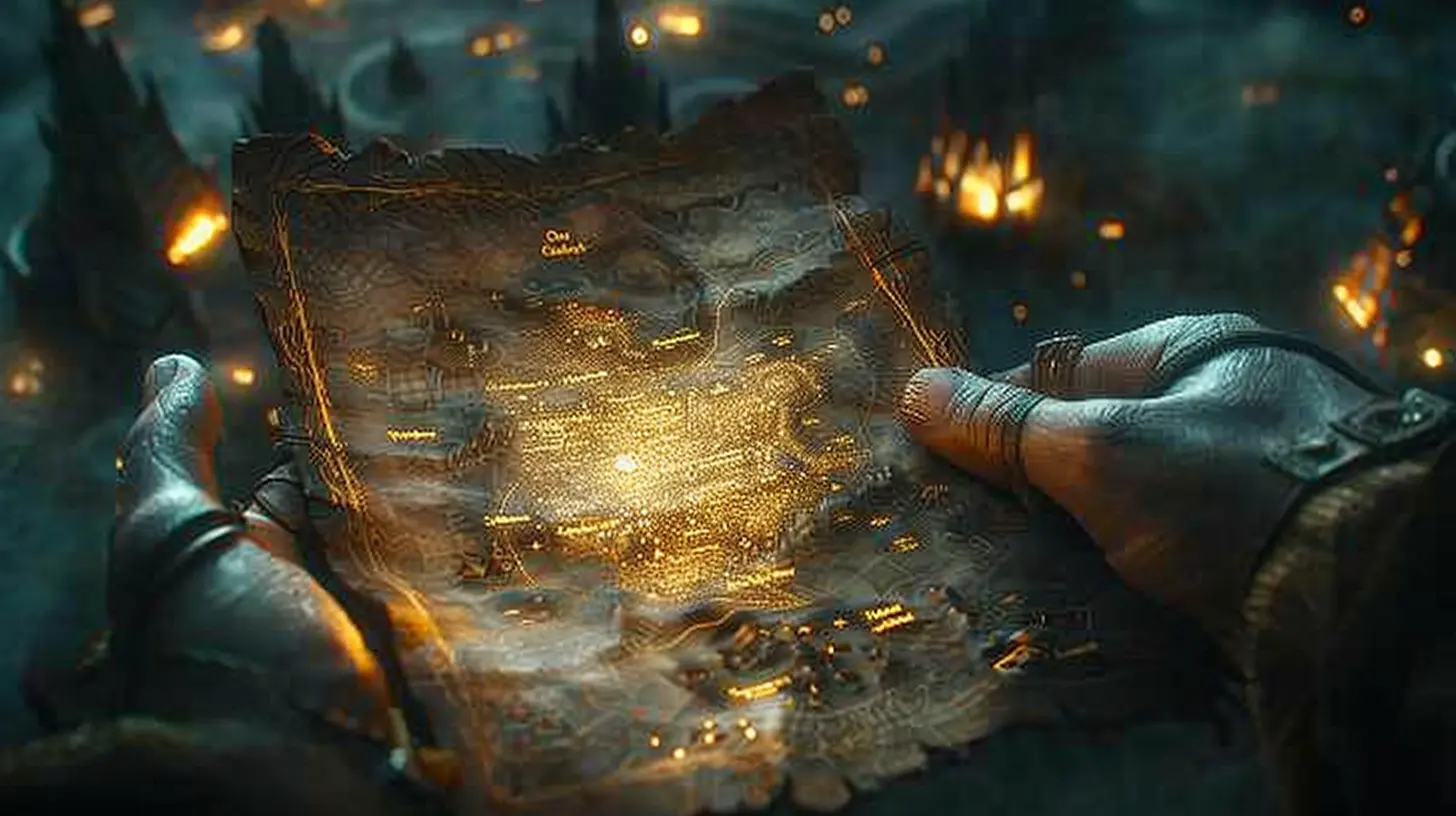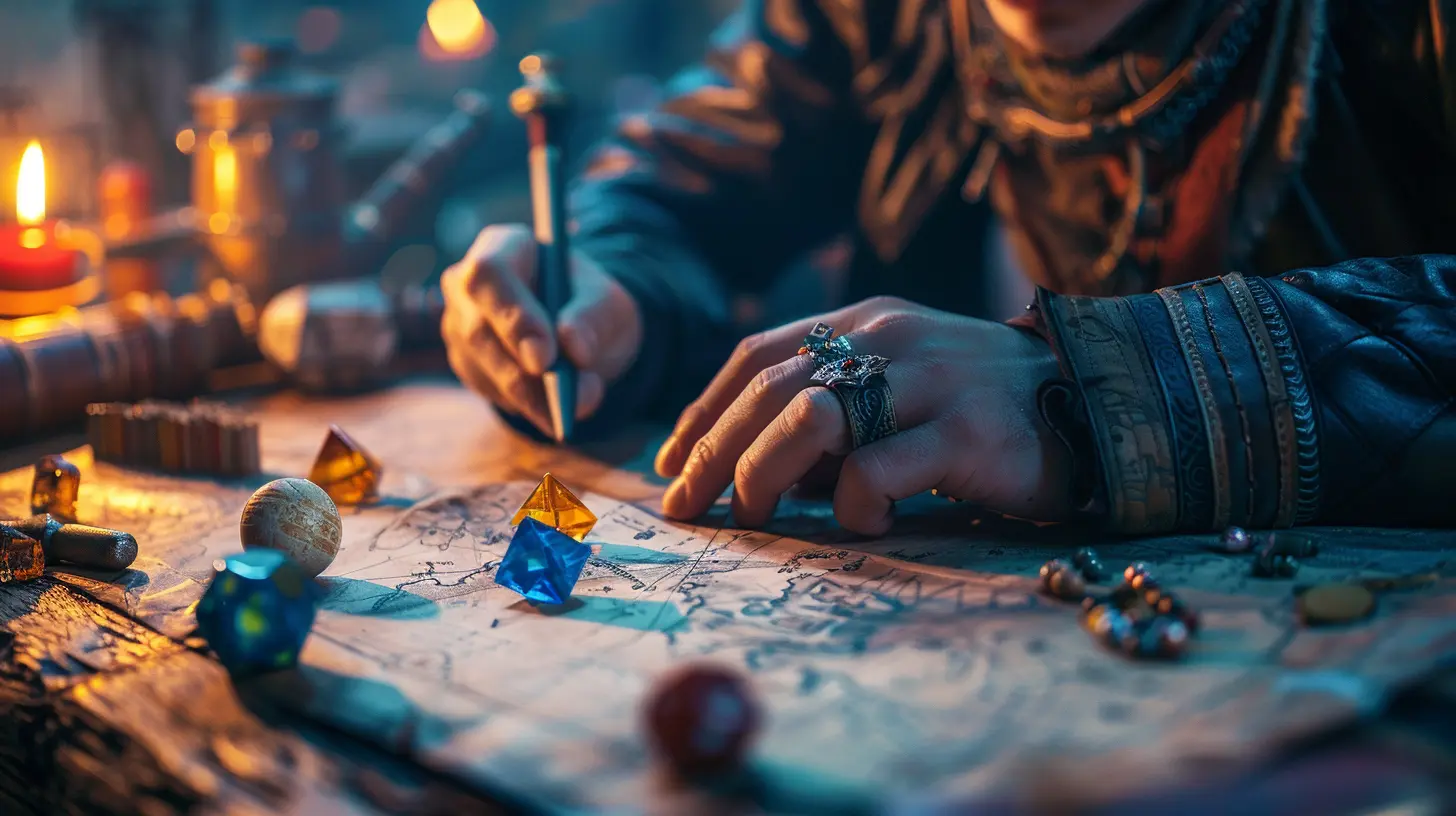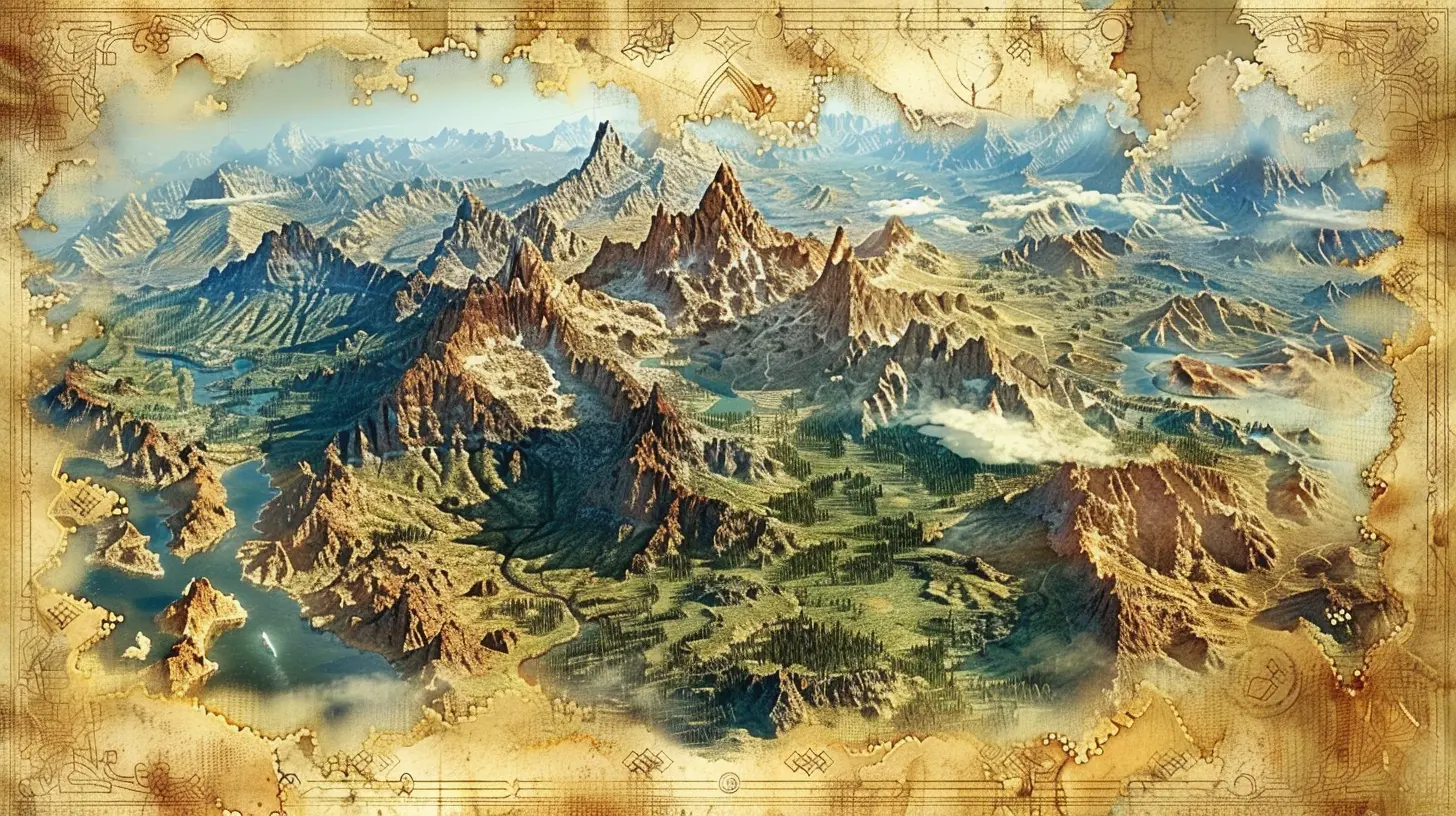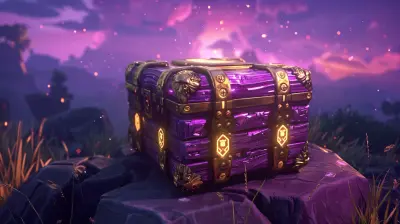Creating Your Own Myth: How to Shape Your RPG World
5 June 2025
Ever dreamed of building an entire universe from scratch? If you’ve ever played an RPG and thought, “Wouldn’t it be cool if this world had two suns and fish that fly instead of swim?”, you’re not alone. Crafting your own RPG world is like being the director, screenwriter, and set designer of your own fantasy epic. You call the shots, write the history, and breathe life into characters who’ve never existed before.
But here’s the thing—world-building isn’t just about cool maps and funky monsters. The spine of any great RPG world is its myth. That deep, underlying story that explains why the gods are jerks, why dragons fear certain mountains, or why that old tree in the village square grants dreams at midnight. Let’s talk about how to shape your RPG world by creating your own myth—one that feels ancient, mysterious, and totally unforgettable.
Why Myth Matters in RPG World-Building
First things first—why bother creating mythology at all? I mean, can’t you just throw in some elves, a villain, and a magic sword and call it a day?Well, you could. But here’s the truth: Myth gives your world depth. It connects the past to the present. It explains the rules of your universe—how magic works, why time flows the way it does, and what happens when someone messes with fate.
Think of myth as a foundation. Like the roots of a massive tree, myths are hidden beneath the surface, but they support everything above ground. Without them, your world can feel flat. With them, even the smallest village feels like it has centuries of forgotten stories.
Start With a Big Question
Ready to shape your myth? Start by asking a simple-but-powerful question: “How did this world come to be?”This is your creation myth, and it sets the tone for everything. Did gods craft it from stardust? Was it born from chaos? Maybe it was the dream of a sleeping titan. Whatever you choose, make it bold. This is your chance to go wild with imagination.
You can also dig deeper:
- What forces shaped the world?
- Is the world a battleground of divine beings?
- Was the world broken and reforged?
- Is the world alive in some way?
The more unique your origin myth, the more flavor your world will have. And remember, myths don’t have to be factual—they’re meant to be symbolic, poetic, and even contradictory. That’s part of their charm.
Create Gods, Spirits, or Cosmic Forces
Every myth needs its players. Deities, spirits, or primal forces are the key figures in your world’s mythology. They explain how things work and why people believe the things they do.You don’t need a pantheon as big as the Greek or Norse gods (unless you want to). A few well-crafted entities with strong personalities and roles can do more than a crowd of faceless figures.
Here’s a trick: give each god or cosmic being a domain (like war, death, music, or the sun), a symbol, and a mythic tale.
For example:
- The Flame-Eyed Serpent, god of knowledge, stole fire from the stars and gave it to mortals.
- Mortalis, the First Mortal, tricked Time itself to extend her people’s lives.
- The Ocean Sings, a spirit that whispers prophecies in the voice of crashing waves.
Want to add tension? Have gods fight, betray, or fall in love. These divine dramas ripple down into the mortal world and shape cultures, kingdoms, and conflicts.
Let Myths Shape Your Cultures
Okay, so you've got your gods and origin stories. Now, how does all of that affect the people living in your RPG world?This is where things get juicy.
Myths aren’t just bedtime stories—they’re the foundation of belief systems, laws, architecture, holidays, and even conflict. A nation that worships a god of storms might build temples on cliffs and wear lightning-shaped amulets. A tribe that believes they were born from a giant’s tears might consider lakes sacred.
Ask yourself:
- What legends do people tell their kids?
- What ancient events are celebrated with festivals?
- How do different groups interpret the same myth?
Here’s where you can play with contrast. Maybe one culture reveres a phoenix as a bringer of hope, while another sees it as an omen of destruction. Same myth, different lens. That’s what makes a world feel real—diverse viewpoints, historical tension, and deep-rooted beliefs.
Build a Timeline of Mythic Events
Want your world to feel like it's been around forever? Build a mythic timeline.You don’t need to write a novel here (unless you want to), but mapping out key mythic events can help ground your setting. Think of it as the “Bible” of your world’s history.
Big events could include:
- The Sundering of the Sky: when mortals challenged the gods and caused a celestial war.
- The Age of Silence: when magic vanished for a thousand years.
- The Ascension of the Blind Queen: a mortal who became divine against all odds.
You don’t need to reveal these outright in your game or story. Sprinkle them in like breadcrumbs—ancient ruins, forgotten texts, or old songs sung in taverns. Let players uncover the world’s mythic past slowly. That’s where the magic lies.
Weave Myth Into Geography
Ever looked at a fantasy map and thought, “Why is that volcano named ‘The Widow’s Rage’?”That’s myth, baby.
Geography is a goldmine for storytelling. Myth gives you a reason to name rivers, mountains, and deserts beyond just aesthetics. It breathes life into landscapes.
Here’s how:
- Give each major location a legend.
- Maybe a cursed forest grew from the grave of a dying goddess.
- A frozen lake might hold the tears of a forgotten hero.
- The capital city could be built atop the bones of a giant.
Even better? Let those myths be only half-true. Maybe folks think the mountain breathes fire because a god sleeps beneath it—but really, it’s just volcanic activity. Or maybe… the god’s real and angry. Let players figure it out.
Infuse Myths Into Your Game Mechanics
This part's for game designers and DMs. Your mythos can directly shape the rules of your game world. Decide how it weaves into gameplay.For example:
- Magic could be a divine gift tied to worship. Lose faith? Lose spells.
- Certain monsters only appear during mythic alignments—eclipses, blood moons, etc.
- Bloodlines of mythic heroes could grant special abilities or curses.
You’re not just creating background flavor. Myths can influence quests, class choices, even loot drops. That ancestral sword isn’t just powerful because of stats—it carries the legacy of an ancient war god.
Immersive, right?
Make Room for Mystery and Doubt
Here’s a golden tip: don’t explain everything.One of the coolest things about myth is that no one’s sure what’s true. Myths contradict themselves. Some are missing chapters. Others were rewritten by victors.
Don’t be afraid to include multiple versions of the same myth. Let players or readers decide what they believe. Maybe the gods are long dead. Or maybe they’re playing a long game, watching from the shadows.
Stay mysterious. Keep them guessing.
Let Players Shape the Myth Too
Want to blow the minds of your players? Let them become part of the myth.Think about it. Every legendary tale started with some nobody doing something incredible. Maybe your players are forging the next chapter of your world’s mythology without even realizing it.
Perhaps:
- Their actions awaken ancient powers.
- They fulfill (or break) a prophecy.
- They become the names future generations whisper in awe—or fear.
The world feels alive when your players leave a mythic footprint behind.
Final Thoughts
Creating your own myth is one of the most satisfying parts of RPG world-building. It's where your creativity runs wild, your storytelling shines, and your world truly comes to life. It’s not about writing a perfect legend from the start—it’s about setting up something that inspires awe, curiosity, and wonder.Take your time. Layer it with detail. Let it evolve. You’re not just building a map—you’re breathing soul into a universe.
So sharpen your quill, summon your inner bard, and shape your myth like only you can.
And remember—every legend started with a single story. Yours begins now.
all images in this post were generated using AI tools
Category:
Fantasy RpgsAuthor:

Jack McKinstry
Discussion
rate this article
3 comments
Rachel McNeal
This article offers valuable insights into world-building in RPGs, emphasizing the importance of narrative depth and player agency. By encouraging creators to blend personal experiences with mythic elements, it fosters a richer gaming experience. Ultimately, the suggestions can lead to more immersive storytelling and meaningful player engagement in fantasy realms.
June 22, 2025 at 2:36 PM

Jack McKinstry
Thank you for your thoughtful comment! I'm glad you found the insights on narrative depth and player agency valuable for enhancing RPG experiences.
Zevon Reed
Remember, in RPGs, even the dragons can have bad hair days!
June 14, 2025 at 3:23 AM

Jack McKinstry
Absolutely! Every character, even dragons, adds depth and relatability to your RPG world. Embrace the imperfections!
Alvin McIntosh
This article brilliantly captures the essence of world-building in RPGs. By focusing on mythology, it encourages players to infuse their narratives with depth and creativity. A strong reminder that our personal stories can shape vibrant, immersive worlds. Can't wait to implement these ideas!
June 9, 2025 at 4:22 AM

Jack McKinstry
Thank you for your kind words! I'm thrilled to hear that you found the article inspiring for your RPG world-building. Happy crafting!



